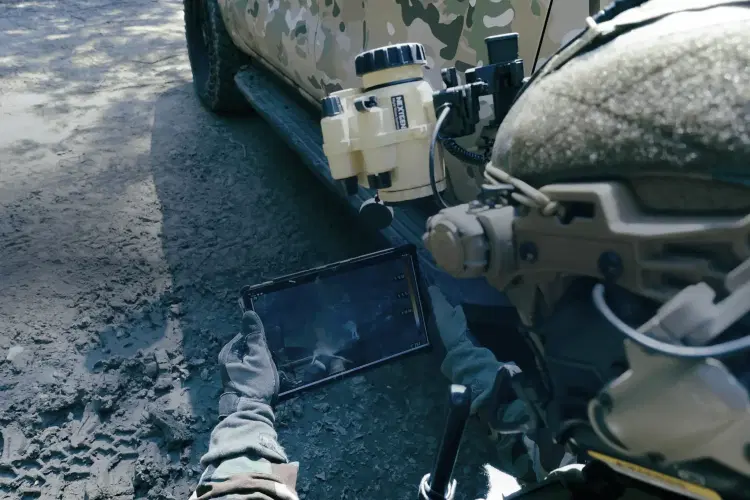{descrb} - AI Adoption in the e-commerce
Automatic product description

Want to know how AI can transform e-commerce? We found a problem that could be perfectly solved with our knowledge. That simple solution speeds up filling product description up to 80%.
Interested how we build it?
- AI Adoption
- DevOps
- Kubernetes
- Docker
- FastAPI
- Figma
- ChatGPT
- Python
- TypeScript
- Retail & E-commerce
- +10AI AdoptionDevOpsKubernetesDockerFastAPIFigmaChatGPTPythonTypeScriptRetail & E-commerce
about the project

{descrb} is an AI-powered platform that's changing how e-commerce businesses handle product descriptions and data.
The entire process speeds up a lot, thanks to image recognition, which can recognize from photos and create a perfect product description way faster than a normal copyrighted. Adopted artificial intelligence in this solution gave the entire e-commerce new the view of performing boring and repetitive operations.
the challenge
Speed up product descriptions operations from just a photo.
technologies

Html

Keras-ocr

Scss

Vue.js

Smarty

Gemini Vision AI

Meta - Llama

OpenAI

Docker

Postgresql

Fastapi

Google Lens

Python

Typescript

SqlAlchemy

Celery

RabbitMq
Results
The {descrb} from its earliest assumptions was intended to optimize ecommerce costs, reduce the need for time-consuming, manual copyrighting, and give stores, retail a tool that would allow them to respond quickly with the addition of product descriptions. Automation and optimization of product description creation, data management, and sales operations translates into real business benefits.
All this is within a single platform.
Faster Product Descriptions
Boost in Conversion
Increased Web Traffic
Faster Product Descriptions
Reduced time to create descriptions - by 96%, from 30 minutes to less than 1 minute per product.
Boost in Conversion
Increase conversion rate by 25% with better product descriptions and faster updates.
Secure Software Development
Increase website traffic by 10% as a result of better and more dynamic content.
Faster Product Descriptions
Reduced time to create descriptions - by 96%, from 30 minutes to less than 1 minute per product.
Benefits
- 1
synergy of NLP models
The use of several language models that work together has made it possible to create even better and more precise product descriptions, which is a unique competitive advantage for the company.
- 2
quality assessment approach
The implementation of the Confidence Index has allowed the company to better assess the relevance of the content generated, increasing confidence in the system.
- 3
AI model training
With new product catalogs, the model tried to get better and better. devopsbay carried out retraining of the AI model so that the {descrb} solution became better and better.
- 4
user interface enhancement
The redesigned dashboard and guidance in building onboarding has resulted in the percentage of users returning to descrb increasing by several percent.
- 5
data security
With its own AI model on a local server, the company has gained better control over confidential information.
client’s feedback
We were particularly impressed with their development flexibility. Thanks to devopsbay, the integration time with game providers was minimized to 50%. Because of this, the time to market was significantly reduced. The team had excellent communication and project management skills; they ad regular online meetings, Slack messages, and Jira updates.
you may also like

The military defense platform to deter and defend
The Defencebay platform is an innovative approach to managing AI technologies in military environments. It is a complete DevSecOps solution with a security focus that meets strict DoD criteria.


Change the data from chaos to clarity
devopsbay helped a multinational manufacturing company on a project to speed up the data preparation process by 70% by implementing DataRobot Data Prep. The project focused on automating the cleaning and transformation of data from multiple sources, significantly reducing the time required to prepare data for analysis.

Enhancing advance MLOps platform
devopsbay worked with Algorithmia on a platform for managing AI/ML models. We implemented central management and flexible deployment options. We added integrations with Kafka and Bitbucket SCM. The results were faster model deployment, better scalability and lower operational costs. The client gained a comprehensive tool for managing the lifecycle of AI/ML models.
